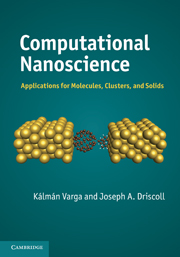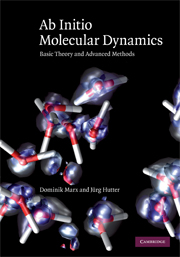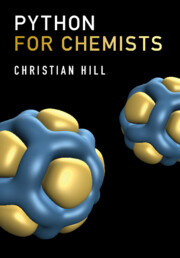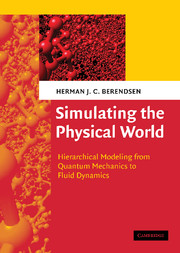Computational Nanoscience
Computer simulation is an indispensable research tool in modeling, understanding and predicting nanoscale phenomena. However, the advanced computer codes used by researchers are too complicated for graduate students wanting to understand computer simulations of physical systems. This book gives students the tools to develop their own codes. Describing advanced algorithms, the book is ideal for students in computational physics, quantum mechanics, atomic and molecular physics, and condensed matter theory. It contains a wide variety of practical examples of varying complexity to help readers at all levels of experience. An algorithm library in Fortran 90, available online at www.cambridge.org/9781107001701, implements the advanced computational approaches described in the text to solve physical problems.
- Gives students the tools needed to understand advanced computer codes and develop their own codes
- Contains a wide variety of practical examples of varying complexity to help readers at all levels of experience
- An algorithm library in Fortran 90, available at www.cambridge.org/9781107001701, gives readers the necessary software tools
Product details
May 2011Adobe eBook Reader
9781139065627
0 pages
0kg
175 b/w illus. 33 tables
This ISBN is for an eBook version which is distributed on our behalf by a third party.
Table of Contents
- Preface
- Part I. 1D Problems:
- 1. Variational solution of the Schrödinger equation
- 2. Solution of bound state problems using a grid
- 3. Solution of the Schrödinger equation for scattering states
- 4. Periodic potentials: band structure in 1D
- 5. Solution of time-dependent problems in quantum mechanics
- 6. Solution of Poisson's equation
- Part II. 2D and 3D Systems:
- 7. 3D real space approach: from quantum dots to Bose–Einstein condensates
- 8. Variational calculations in 2D: quantum dots
- 9. Variational calculations in 3D: atoms and molecules
- 10. Monte Carlo calculations
- 11. Molecular dynamics simulations
- 12. Tight binding approach to electronic structure calculations
- 13. Plane wave density functional calculations
- 14. Density functional calculations with atomic orbitals
- 15. Real-space density functional calculations
- 16. Time-dependent density functional calculations
- 17. Scattering and transport in nanostructures
- 18. Numerical linear algebra
- Appendix: code descriptions
- References
- Index.






